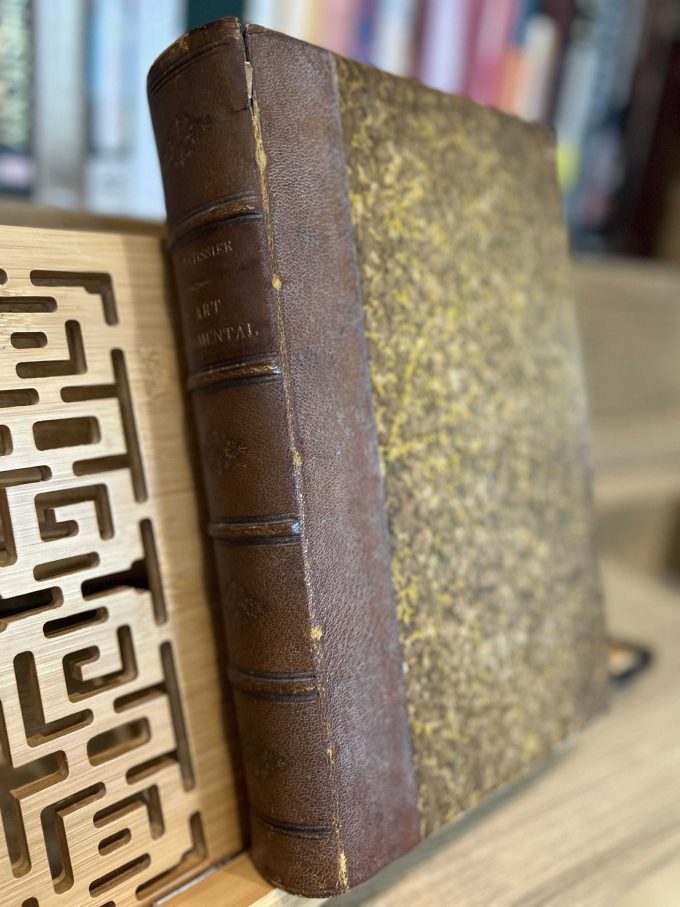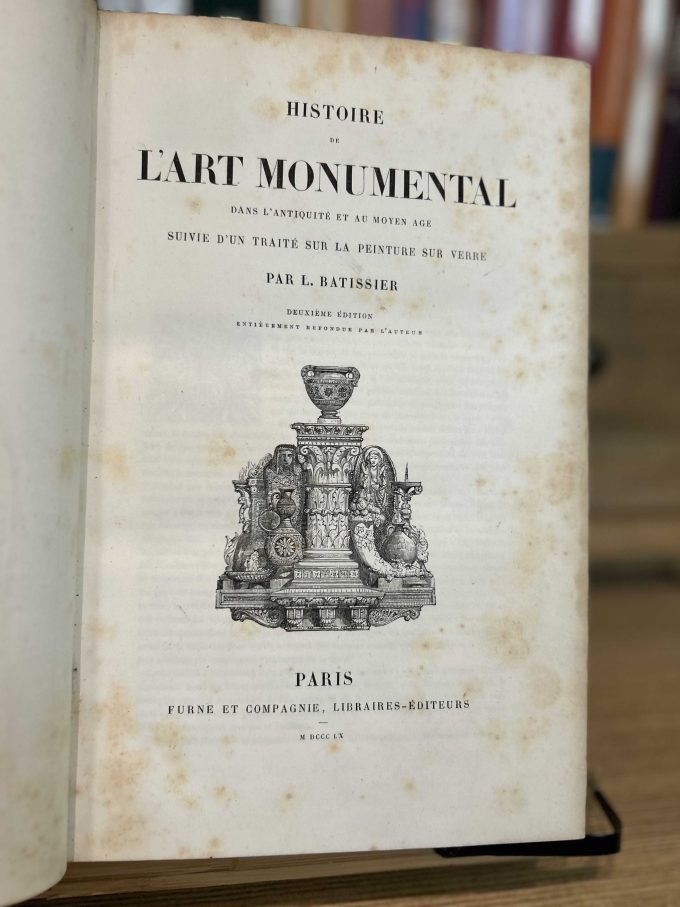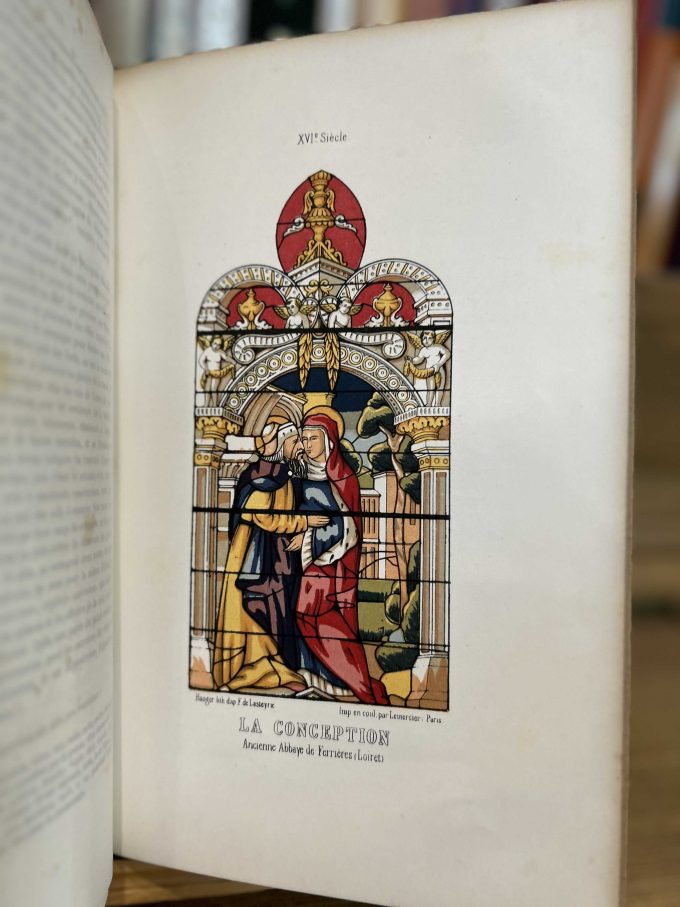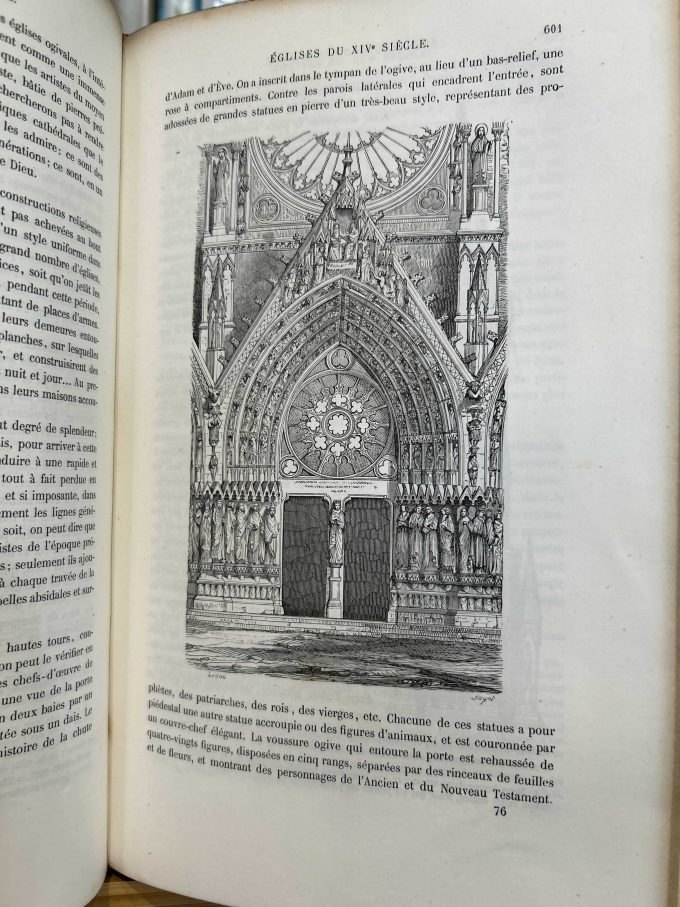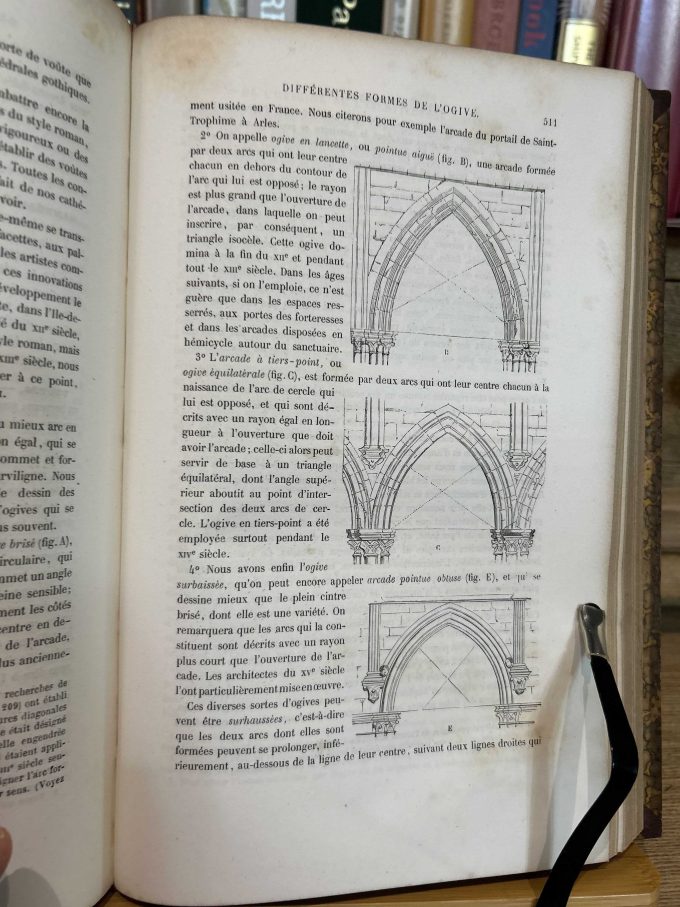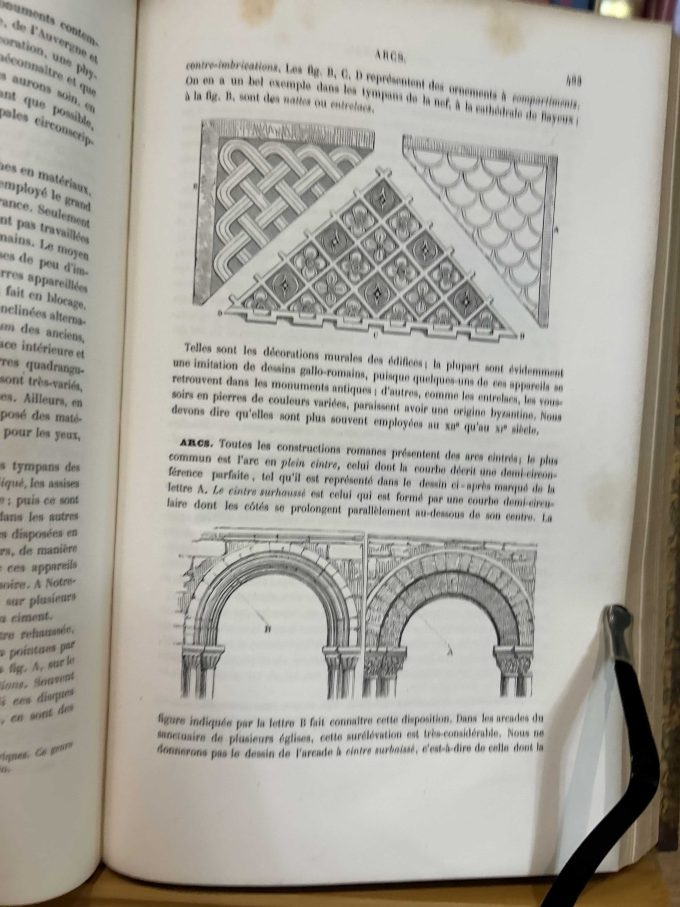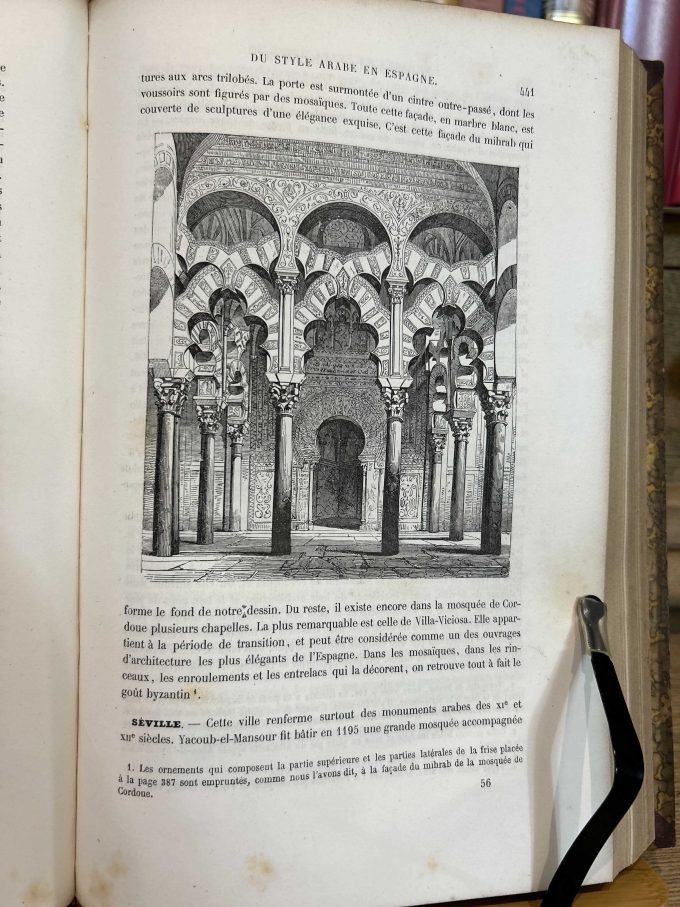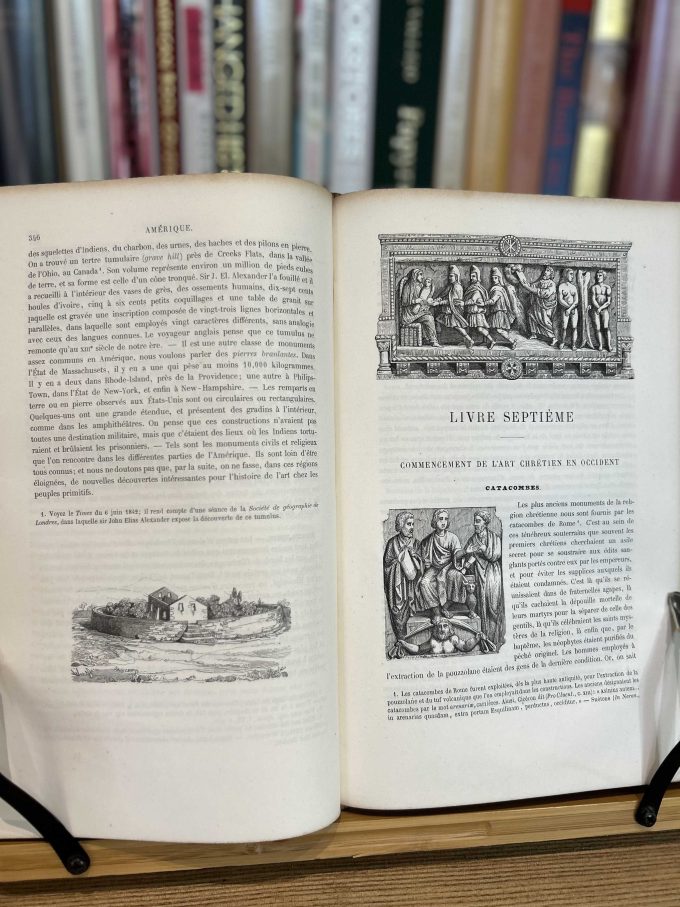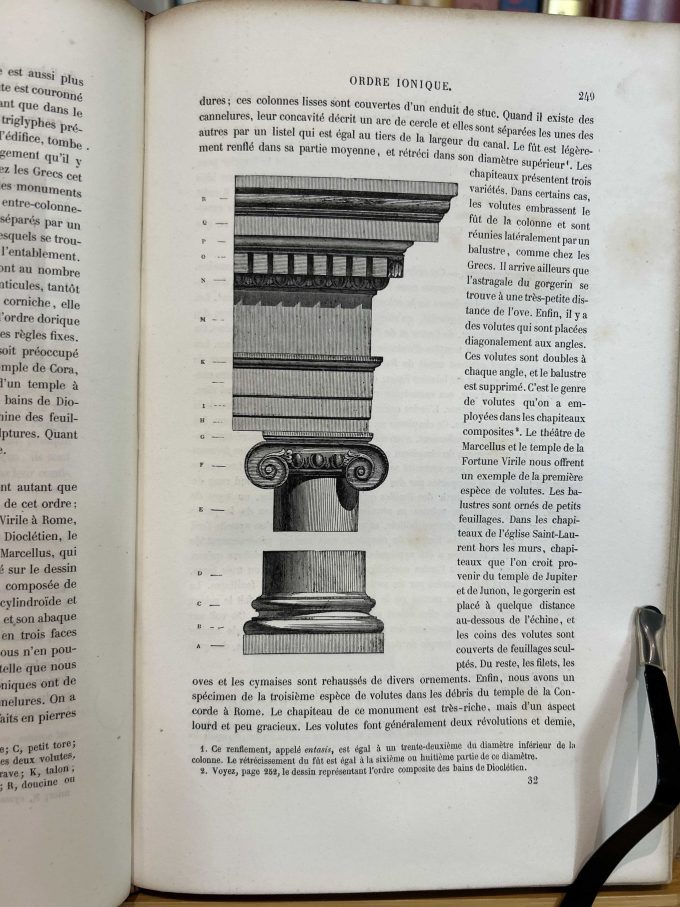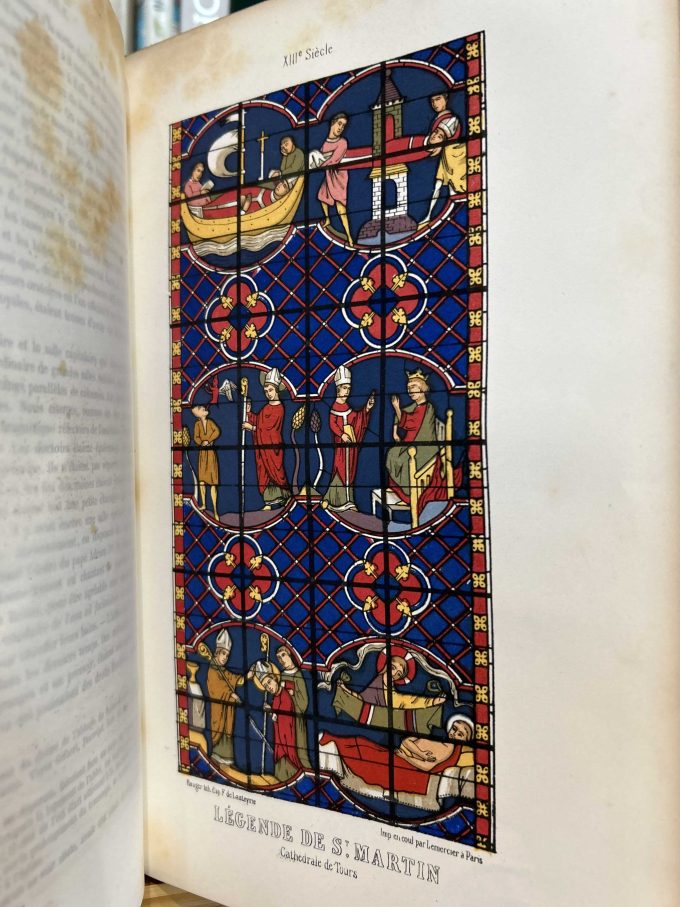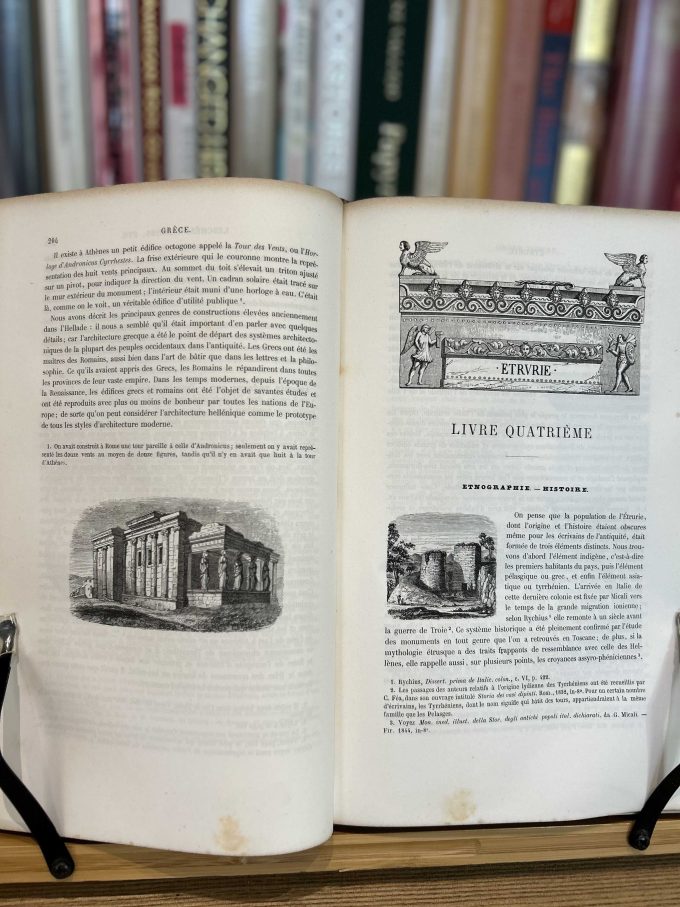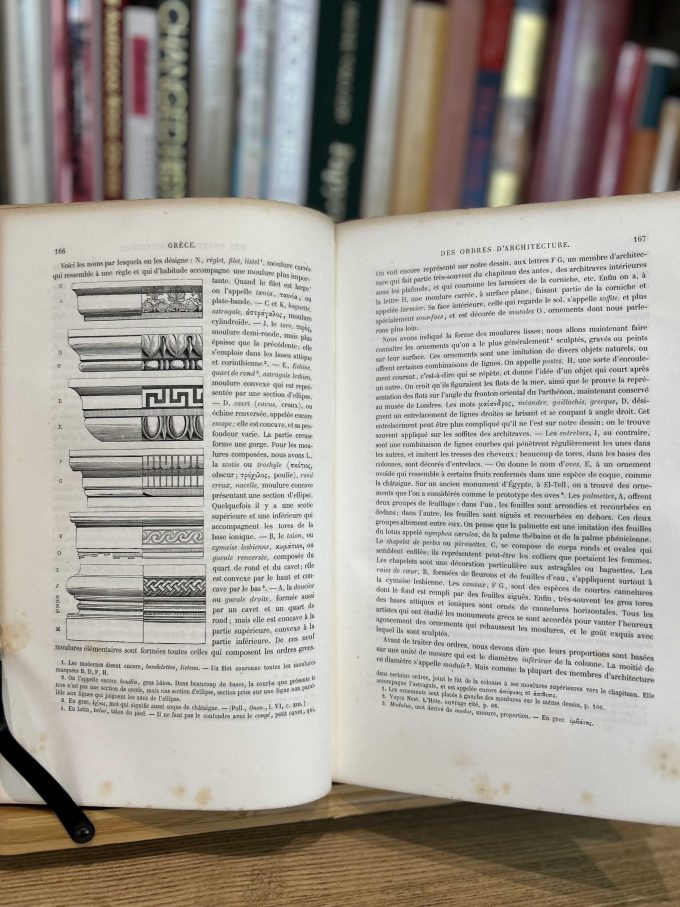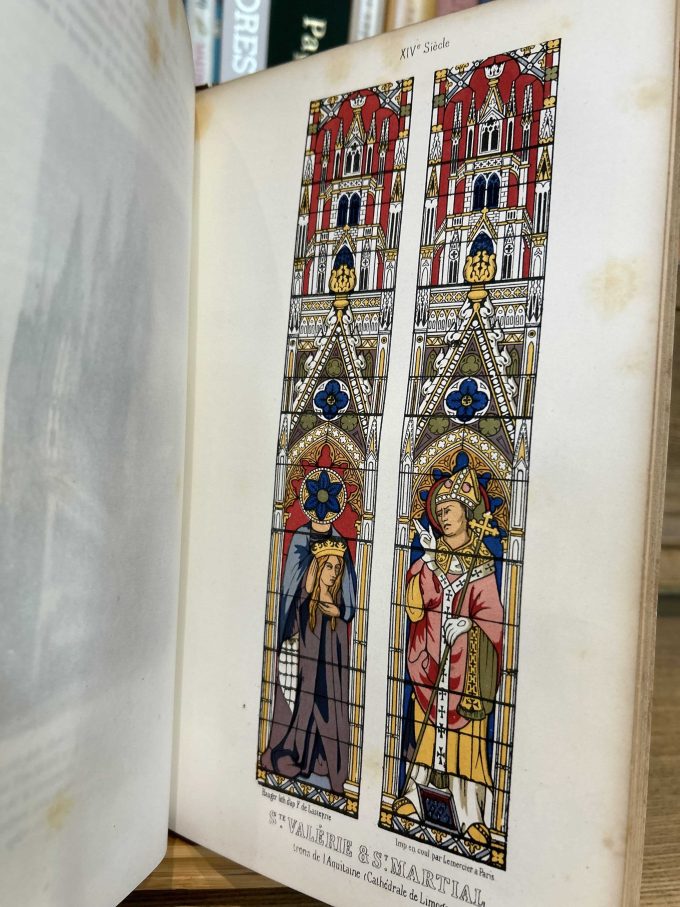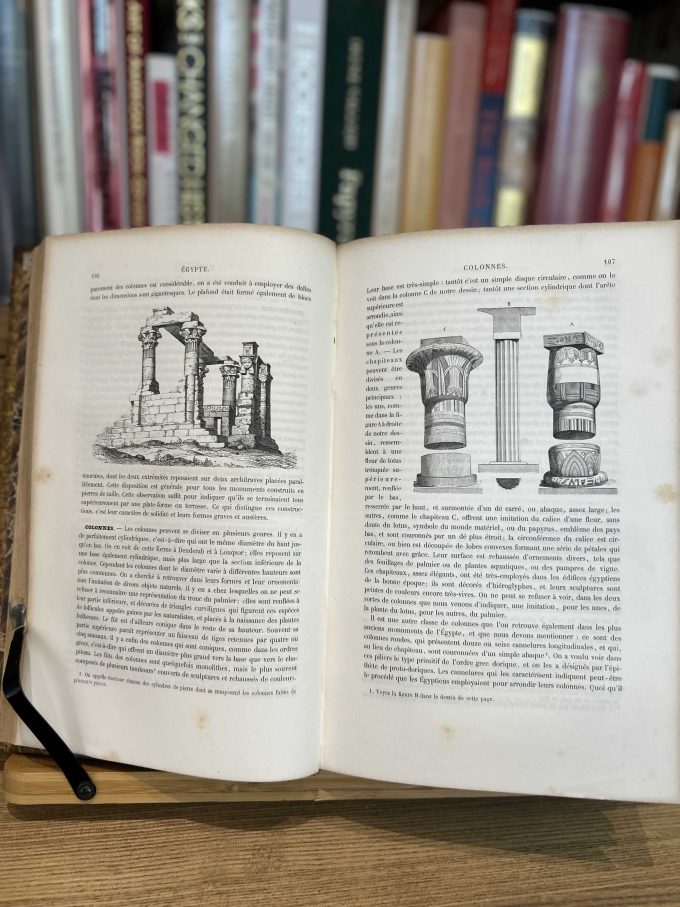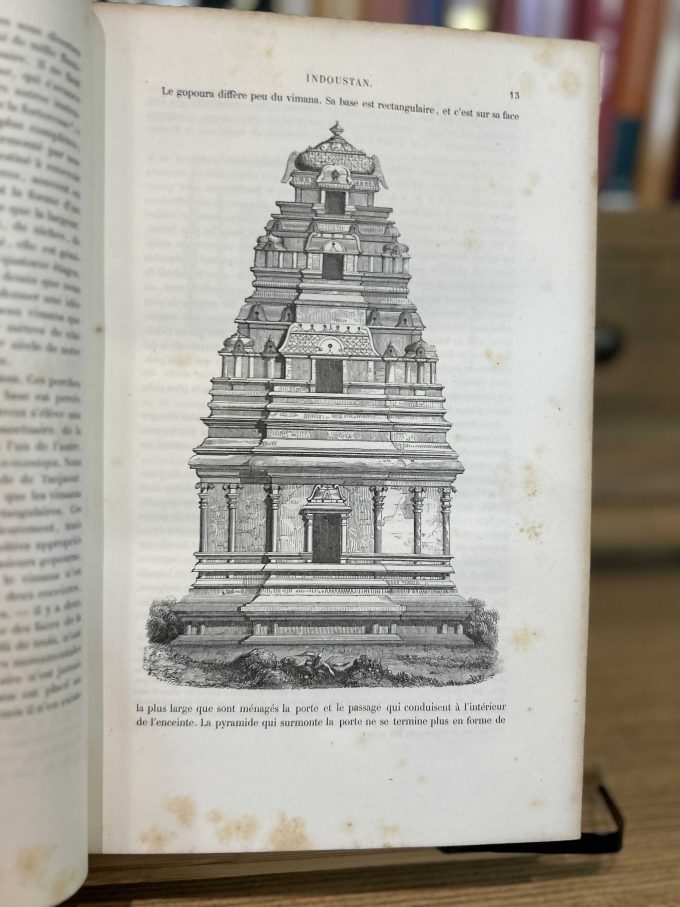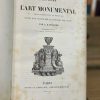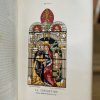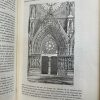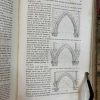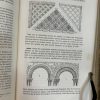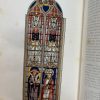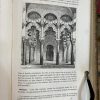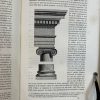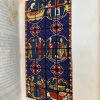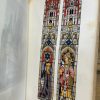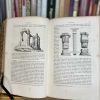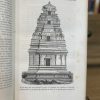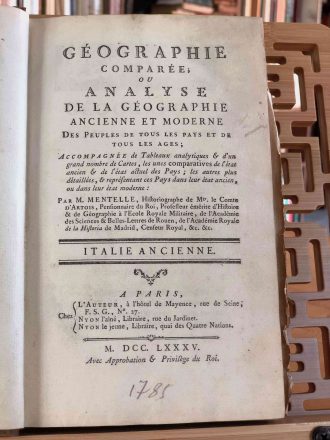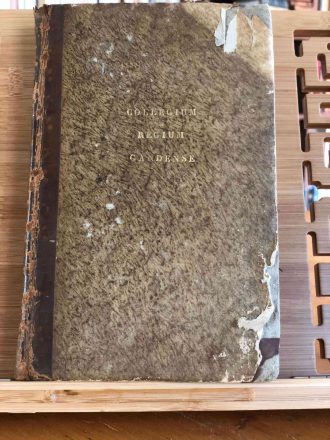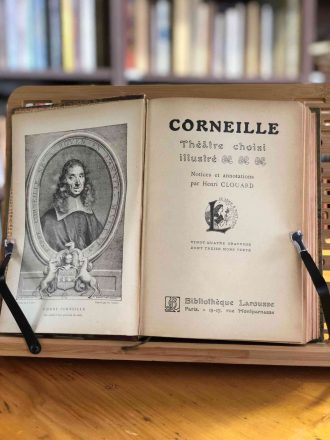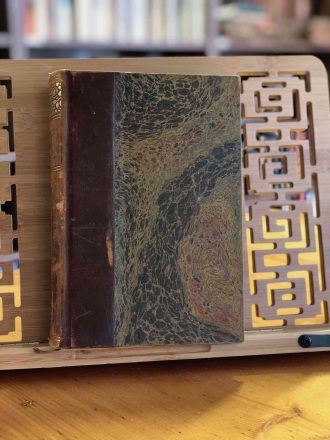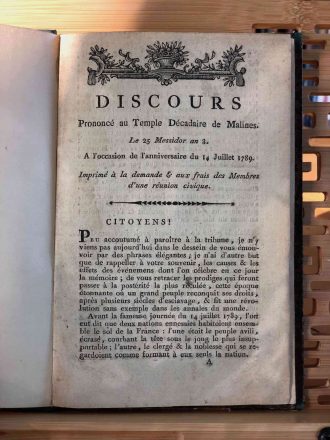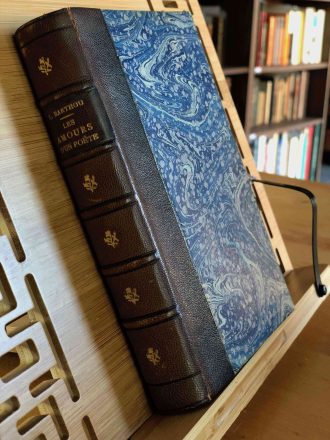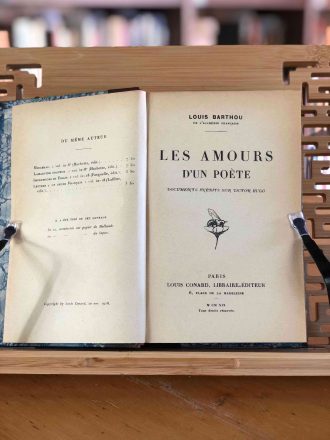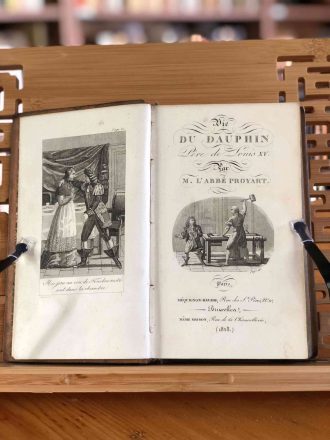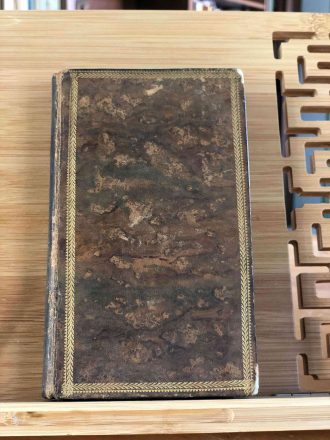Français:
Histoire de l’art monumental dans l’antiquité et au moyen âge, suivie d’un traité de la peinture sur verre par Louis Batissier est une œuvre monumentale qui offre une étude exhaustive de l’art monumental depuis l’Antiquité jusqu’au Moyen Âge. Publié en 1860, cette seconde édition est un témoignage de l’érudition de Batissier et de son engagement pour la documentation et l’analyse des œuvres architecturales et artistiques de ces époques. Ce volume de 719 pages, richement illustré, explore les différentes formes d’art monumental, notamment l’architecture, la sculpture, et les vitraux, en retraçant leur évolution à travers les âges.
Le livre est divisé en deux parties principales. La première partie est consacrée à l’histoire de l’art monumental. Batissier examine en détail les styles architecturaux de l’Égypte ancienne, de la Grèce et de Rome, avant de se concentrer sur l’ère médiévale en Europe. Il décrit les développements du style roman au gothique, en passant par l’art byzantin, et s’intéresse aux monuments les plus emblématiques de chaque période. Batissier met en lumière non seulement les aspects techniques de ces constructions, mais aussi leur signification symbolique et religieuse, en les situant dans leur contexte historique.
La deuxième partie du livre est un traité sur la peinture sur verre, un art qui a connu son apogée au Moyen Âge avec la création des vitraux des cathédrales gothiques. Batissier décrit les techniques de fabrication et de peinture du verre, ainsi que les méthodes de restauration des vitraux anciens. Il s’intéresse également à l’évolution stylistique de cet art, montrant comment les thèmes religieux ont influencé les choix esthétiques des artisans. Les nombreux plans, gravures en noir et blanc et en couleur, ainsi que les pièces d’initiales et les bandeaux de chapitres, illustrent et enrichissent le texte, offrant au lecteur une immersion visuelle dans l’univers de l’art monumental.
Histoire de l’art monumental est un ouvrage de référence pour les historiens de l’art, les architectes et les amateurs d’art. La richesse des illustrations, protégées pour certaines par des serpentes, ajoute une dimension précieuse à cet ouvrage, qui reste un exemple remarquable d’érudition et de précision dans l’étude de l’art monumental et de la peinture sur verre. Cet ouvrage de Louis Batissier continue d’être une source incontournable pour quiconque s’intéresse à l’art et à l’architecture des périodes antiques et médiévales.
Louis Batissier (1813-1885) était un historien de l’art et archéologue français, spécialisé dans l’étude de l’art monumental et des techniques artistiques anciennes. Né à Thoissey, dans l’Ain, Batissier a suivi une formation académique rigoureuse qui l’a conduit à explorer divers domaines de l’art, de l’architecture et de l’histoire. Il a consacré une grande partie de sa carrière à l’enseignement et à la publication de travaux visant à éclairer les aspects méconnus de l’art et de l’architecture à travers les âges.
Batissier est particulièrement reconnu pour ses travaux sur l’art monumental, où il a combiné une approche historique rigoureuse avec une analyse esthétique et technique des œuvres qu’il étudiait. Ses recherches étaient souvent accompagnées de gravures détaillées, ce qui rendait ses publications non seulement informatives mais aussi visuellement attrayantes pour ses lecteurs. Outre ses travaux sur l’art monumental, Batissier a également écrit sur d’autres aspects de l’art et de l’artisanat, y compris la peinture sur verre, un sujet qui faisait l’objet de son grand intérêt.
Au cours de sa carrière, Batissier a occupé plusieurs postes académiques, contribuant à la formation de générations de jeunes historiens et architectes. Son œuvre, notamment Histoire de l’art monumental dans l’antiquité et au moyen âge, a eu une influence durable sur le domaine de l’histoire de l’art, en particulier dans l’étude de l’architecture et de la sculpture des périodes antiques et médiévales. Batissier a su rendre accessible des connaissances complexes à un public plus large, tout en maintenant un haut niveau de rigueur académique.
L’héritage de Louis Batissier en tant qu’historien de l’art et éducateur reste important, et ses écrits continuent d’être consultés par les chercheurs et les amateurs d’art. Sa capacité à combiner une recherche minutieuse avec une présentation claire et esthétique a fait de lui une figure respectée dans son domaine. Aujourd’hui, ses œuvres sont toujours considérées comme des références essentielles pour comprendre l’évolution de l’art monumental et des techniques artistiques qui ont marqué l’histoire de l’humanité.
English:
Histoire de l’art monumental dans l’antiquité et au moyen âge, suivie d’un traité de la peinture sur verre by Louis Batissier is a monumental work that provides a comprehensive study of monumental art from antiquity to the Middle Ages. Published in 1860, this second edition reflects Batissier’s erudition and his commitment to documenting and analyzing architectural and artistic works from these periods. This 719-page volume, richly illustrated, explores various forms of monumental art, including architecture, sculpture, and stained glass, tracing their evolution through the ages.
The book is divided into two main parts. The first part is dedicated to the history of monumental art. Batissier examines in detail the architectural styles of ancient Egypt, Greece, and Rome, before focusing on the medieval period in Europe. He describes the developments from Romanesque to Gothic, including Byzantine art, and discusses the most emblematic monuments of each period. Batissier highlights not only the technical aspects of these constructions but also their symbolic and religious significance, placing them within their historical context.
The second part of the book is a treatise on stained glass painting, an art that reached its zenith in the Middle Ages with the creation of the stained glass windows of Gothic cathedrals. Batissier describes the techniques of making and painting glass, as well as methods for restoring ancient stained glass. He also pays attention to the stylistic evolution of this art form, showing how religious themes influenced the aesthetic choices of the artisans. The numerous black-and-white and color engravings, as well as the plans, initials, and chapter headpieces, illustrate and enrich the text, offering the reader a visual immersion into the world of monumental art.
Histoire de l’art monumental is a reference work for art historians, architects, and art lovers. The wealth of illustrations, some protected by tissue guards, adds a valuable dimension to this work, which remains a remarkable example of erudition and precision in the study of monumental art and stained glass painting. This work by Louis Batissier continues to be an indispensable resource for anyone interested in the art and architecture of antiquity and the Middle Ages.
Louis Batissier (1813-1885) was a French art historian and archaeologist specializing in the study of monumental art and ancient artistic techniques. Born in Thoissey, in the Ain department, Batissier received a rigorous academic education that led him to explore various fields of art, architecture, and history. He devoted much of his career to teaching and publishing works aimed at illuminating the lesser-known aspects of art and architecture throughout the ages.
Batissier is particularly recognized for his work on monumental art, where he combined a rigorous historical approach with an aesthetic and technical analysis of the works he studied. His research was often accompanied by detailed engravings, making his publications not only informative but also visually appealing to his readers. In addition to his work on monumental art, Batissier also wrote on other aspects of art and craft, including stained glass painting, a subject of great interest to him.
During his career, Batissier held several academic positions, contributing to the education of generations of young historians and architects. His work, particularly Histoire de l’art monumental dans l’antiquité et au moyen âge, has had a lasting influence on the field of art history, especially in the study of architecture and sculpture from antiquity and the Middle Ages. Batissier succeeded in making complex knowledge accessible to a broader audience while maintaining a high level of academic rigor.
Louis Batissier’s legacy as an art historian and educator remains significant, and his writings continue to be consulted by researchers and art enthusiasts. His ability to combine meticulous research with clear and aesthetic presentation made him a respected figure in his field. Today, his works are still considered essential references for understanding the evolution of monumental art and the artistic techniques that have shaped the history of humanity.
Nederlands:
Histoire de l’art monumental dans l’antiquité et au moyen âge, suivie d’un traité de la peinture sur verre van Louis Batissier is een monumentaal werk dat een uitgebreide studie biedt van de monumentale kunst vanaf de oudheid tot en met de middeleeuwen. Dit boek, gepubliceerd in 1860, vertegenwoordigt de tweede editie en getuigt van Batissiers eruditie en zijn inzet voor de documentatie en analyse van architectonische en artistieke werken uit deze periodes. Dit volume van 719 pagina’s, rijkelijk geïllustreerd, verkent de verschillende vormen van monumentale kunst, waaronder architectuur, beeldhouwkunst en glas-in-lood, en volgt hun ontwikkeling door de eeuwen heen.
Het boek is opgedeeld in twee hoofdonderdelen. Het eerste deel is gewijd aan de geschiedenis van de monumentale kunst. Batissier onderzoekt in detail de architecturale stijlen van het oude Egypte, Griekenland en Rome, voordat hij zich richt op de middeleeuwse periode in Europa. Hij beschrijft de ontwikkelingen van de romaanse naar de gotische stijl, inclusief de Byzantijnse kunst, en bespreekt de meest emblematische monumenten van elke periode. Batissier belicht niet alleen de technische aspecten van deze bouwwerken, maar ook hun symbolische en religieuze betekenis, door ze in hun historische context te plaatsen.
Het tweede deel van het boek is een verhandeling over glas-in-lood schilderkunst, een kunstvorm die zijn hoogtepunt bereikte in de middeleeuwen met de creatie van de glas-in-loodramen van gotische kathedralen. Batissier beschrijft de technieken van het maken en schilderen van glas, evenals de methoden voor het restaureren van oude glas-in-loodramen. Hij besteedt ook aandacht aan de stilistische evolutie van deze kunstvorm, en laat zien hoe religieuze thema’s de esthetische keuzes van de kunstenaars beïnvloedden. De talrijke zwart-wit en kleuren gravures, evenals de plannen, initiaalversieringen en hoofdstukbanden, illustreren en verrijken de tekst, waardoor de lezer visueel wordt ondergedompeld in de wereld van de monumentale kunst.
Histoire de l’art monumental is een naslagwerk voor kunsthistorici, architecten en kunstliefhebbers. De rijkdom aan illustraties, waarvan sommige worden beschermd door beschermvellen, voegt een waardevolle dimensie toe aan dit werk, dat een opmerkelijk voorbeeld blijft van eruditie en precisie in de studie van monumentale kunst en glas-in-lood schilderkunst. Dit werk van Louis Batissier blijft een onmisbare bron voor iedereen die geïnteresseerd is in de kunst en architectuur van de oudheid en de middeleeuwen.
Louis Batissier (1813-1885) was een Franse kunsthistoricus en archeoloog, gespecialiseerd in de studie van monumentale kunst en oude artistieke technieken. Geboren in Thoissey, in het departement Ain, volgde Batissier een rigoureuze academische opleiding die hem leidde naar het verkennen van verschillende domeinen van kunst, architectuur en geschiedenis. Hij wijdde een groot deel van zijn carrière aan het onderwijs en aan de publicatie van werken die tot doel hadden de minder bekende aspecten van kunst en architectuur door de eeuwen heen te belichten.
Batissier staat vooral bekend om zijn werk over monumentale kunst, waarin hij een rigoureuze historische aanpak combineerde met een esthetische en technische analyse van de werken die hij bestudeerde. Zijn onderzoek werd vaak vergezeld van gedetailleerde gravures, wat zijn publicaties niet alleen informatief maar ook visueel aantrekkelijk maakte voor zijn lezers. Naast zijn werk over monumentale kunst schreef Batissier ook over andere aspecten van kunst en ambacht, waaronder glas-in-lood schilderkunst, een onderwerp dat zijn grote interesse had.
Tijdens zijn carrière bekleedde Batissier verschillende academische posities, waarbij hij generaties jonge historici en architecten opleidde. Zijn werk, met name Histoire de l’art monumental dans l’antiquité et au moyen âge, heeft een blijvende invloed gehad op het vakgebied van de kunstgeschiedenis, vooral in de studie van de architectuur en beeldhouwkunst uit de oudheid en de middeleeuwen. Batissier slaagde erin complexe kennis toegankelijk te maken voor een breder publiek, terwijl hij een hoog niveau van academische nauwkeurigheid handhaafde.
De erfenis van Louis Batissier als kunsthistoricus en opvoeder blijft belangrijk, en zijn geschriften worden nog steeds geraadpleegd door onderzoekers en kunstliefhebbers. Zijn vermogen om nauwgezet onderzoek te combineren met een duidelijke en esthetische presentatie maakte hem tot een gerespecteerde figuur in zijn vakgebied. Vandaag de dag worden zijn werken nog steeds beschouwd als essentiële referenties voor het begrijpen van de evolutie van monumentale kunst en de artistieke technieken die de geschiedenis van de mensheid hebben gekenmerkt.

